Exercise is an essential part of maintaining a healthy lifestyle, but sometimes it can be difficult to find the time or resources to go to a gym. Fortunately, there are plenty of exercises that can be done at home with minimal equipment. In this article, we will explore the top 5 exercises you can do at home to help you stay fit and healthy. From bodyweight exercises like push-ups and squats to equipment-based workouts like dumbbell presses and kettlebell swings, there is something for everyone. Whether you are a beginner or an experienced athlete, these exercises can help you achieve your fitness goals without ever leaving the comfort of your own home.
The importance of regular exercise cannot be overstated. Regular physical activity has been shown to improve overall health and well-being, including reducing the risk of chronic diseases such as heart disease and diabetes, improving mental health and mood, and promoting weight loss and weight management. Exercise can also improve sleep, increase energy levels, and enhance overall physical and mental performance.
Exercising at home can be a convenient and effective way to maintain a healthy lifestyle. With a little creativity and determination, you can achieve your fitness goals without ever stepping foot in a gym. In this article, we will highlight the top five exercises that can be easily done at home to help you get in shape and feel great. From bodyweight exercises to yoga and Pilates, these workouts will provide a full-body workout and help you to improve your strength, flexibility, and overall fitness. So grab a towel and some water, and let's get moving!
What are the Benefits of Working Out at Home and the Importance of Regular Exercise?
There are several benefits of working out at home, including:
Convenience
Working out at home allows you to exercise whenever it is convenient for you, without the need to travel to a gym or other fitness facility.
Cost-effective
Working out at home can save you money on gym memberships and other associated costs, such as transportation and childcare.
Flexibility
Working out at home allows you to choose your own workouts and tailor them to your individual fitness goals and abilities.
Privacy
Working out at home allows you to exercise in the privacy of your own space, without the potential distractions and judgments of others.
Variety
There are many different types of workouts that can be done at home, from bodyweight exercises to yoga to high-intensity interval training, allowing you to switch up your routine and prevent boredom.
Home Workouts Offer a Convenient and Cost-effective Way to Stay Fit and Healthy.
One of the biggest advantages of home workouts is the convenience factor. With a home workout, you can exercise at any time of the day or night that is convenient for you. You don't have to worry about finding time to go to the gym or finding a class that fits into your schedule. You can also choose a location that is comfortable for you, such as your living room or backyard.
Another advantage of home workouts is their cost-effectiveness. Gym memberships and fitness classes can be expensive, especially if you are trying to fit them into your budget. With a home workout, you can save money by not having to pay for a gym membership or fitness classes. You can also save money by using your own equipment or using items that you already have around the house, such as a yoga mat or weights.
Overall, home workouts are a convenient and cost-effective way to stay fit and healthy. They offer the flexibility to exercise on your own time and in a location that is comfortable for you, while also being a more affordable option than a gym membership or fitness classes
Benefits of Regular Exercise on Physical and Mental Health
Regular exercise has numerous benefits for both physical and mental health. On the physical side, regular exercise can improve cardiovascular health, increase flexibility and strength, and help with weight management. It can also reduce the risk of chronic diseases such as obesity, type 2 diabetes, and heart disease.
In terms of mental health, regular exercise has been shown to reduce stress and anxiety, improve mood, and enhance cognitive function. It can also help with sleep quality and can be a valuable tool for managing symptoms of depression and other mental health conditions.
Additionally, regular exercise can increase self-esteem and confidence, promote social connections, and provide a sense of accomplishment and achievement. It can also be a great way to relieve boredom and combat sedentary lifestyles. Overall, regular exercise can greatly enhance both physical and mental well-being.
The 5 Best Exercises to Do at Home
Here are some of the exercises you can try at home:
Push-ups
This classic exercise targets the chest, shoulders, and triceps, and can be modified to suit different fitness levels.
How to Perform Push-ups
1. Begin in a plank position with your hands placed slightly wider than shoulder-width apart on the ground. Your feet should be hip-width apart and your body should be straight and aligned from head to toe.
2. Inhale and bend your elbows, lowering your body towards the ground until your chest is an inch away from touching the floor.
3. Exhale and push yourself back up to the starting position, straightening your arms and keeping your body straight and aligned.
4. Repeat for the desired number of repetitions, taking care to keep your core engaged and your body in proper alignment throughout the movement.
5. To increase the difficulty of the push-up, try elevating your feet on a bench or other stable surface. This will shift more weight onto your upper body, making the exercise more challenging.
6. To modify the push-up for beginners or those with wrist or elbow issues, try performing the movement on your knees instead of your toes. This will reduce the weight and stress on your upper body while still providing a challenging workout.
Squats
Squats work the legs and glutes and can be done with or without added weight to increase the difficulty.
How to perform Squats
1. Stand with your feet shoulder-width apart and your toes pointing forward. Engage your core and keep your chest up and shoulders back.
2. Slowly bend your knees and hips to lower your body down as if you are sitting back in a chair. Keep your weight in your heels and your back straight.
3. Once your thighs are parallel to the ground, pause for a moment before pushing through your heels to straighten your legs and return to the starting position.
4. Repeat the movement for the desired number of repetitions.
5. To increase the difficulty, you can hold weights or a barbell on your shoulders.
6. As with any exercise, it is important to consult with a healthcare professional before beginning any new fitness routine.
Planks
Planks engage the core muscles and can be modified to focus on different areas, such as the upper or lower body.
How to Perform Plank
1. Start by getting into a push-up position, with your hands placed shoulder-width apart on the ground.
2. Engage your core muscles and keep your body in a straight line from head to toe.
3. Hold this position for 30 seconds to 1 minute, making sure to breathe and keep your body in a straight line.
4. To increase the difficulty, try lifting one leg off the ground or placing your hands on a stability ball instead of the ground.
5. As you become stronger, increase the length of time you hold the plank.
6. Remember to keep your body in a straight line and engage your core muscles throughout the exercise.
Lunges
Lunges are great for strengthening the legs and improving balance and stability.
How to Perform Lunges
1. Start by standing with your feet shoulder-width apart and your hands on your hips.
2. Take a big step forward with your right leg, bending your knee to a 90-degree angle. Your left leg should be straight behind you, with your toes on the ground.
3. Push off your right foot to return to the starting position. Repeat the movement with your left leg.
4. Continue alternating legs for the desired number of repetitions. Make sure to keep your torso upright and your front knee aligned over your ankle throughout the movement.
5. To increase the challenge, you can hold dumbbells in each hand or perform the lunges with a resistance band around your legs. You can also perform the movement on a step or elevated surface to add more range of motion.
Sit-ups
Sit-ups are a simple and effective way to strengthen the abdominal muscles and improve overall core strength.
How to Perform sit-ups
1. Start by lying on your back with your knees bent and feet flat on the ground.
2. Place your hands behind your head, keeping your elbows out to the sides.
3. Engage your core muscles by contracting your abs and lifting your upper body off the ground.
4. Slowly raise your torso up, bringing your chest towards your knees.
5. Keep your lower back pressed against the ground and avoid using your hands to pull yourself up.
6. Once you reach the top of the movement, pause for a moment before slowly lowering yourself back down to the starting position.
7. Repeat this movement for the desired number of repetitions.
8. Remember to breathe deeply and evenly throughout the exercise.
The Versatility and Effectiveness of Bodyweight Exercises
Bodyweight exercises are a type of physical exercise that uses the weight of your own body as resistance instead of using external equipment such as weights or machines. These exercises are versatile because they can be performed anywhere, without the need for any specialized equipment. They are also effective because they can target multiple muscle groups and can be adjusted to suit different fitness levels and goals.
Some examples of bodyweight exercises include push-ups, squats, lunges, plank, and burpees. These exercises can be used to build strength, improve cardiovascular fitness, and increase flexibility. Bodyweight exercises are also low-impact, which makes them suitable for people of all ages and fitness levels, including those who are new to exercise or have injuries or chronic conditions.
One of the main advantages of bodyweight exercises is that they can be easily modified to make them more challenging or easier, depending on your fitness level. For example, you can make push-ups more challenging by elevating your feet, or you can make them easier by doing them on your knees. This allows you to gradually increase the intensity of your workouts and continue to challenge your body as you get stronger.
Another advantage of bodyweight exercises is that they can be performed in a variety of settings, such as at home, in a park, or at the gym. This makes them a convenient and accessible option for people who may not have access to weights or other equipment.
What are the Specific Muscles that Each Exercise Targets
Push-ups target the chest muscles (pectoralis major), triceps, and shoulder muscles (deltoids).
Squats target the quadriceps, glutes, hamstrings, and calves.
Planks typically target the core muscles, including the rectus abdominis, obliques, transverse abdominis, and erector spinae. They also engage the muscles in the shoulders, chest, and back.
Lunges target the quadriceps, glutes, and hamstrings muscles.
Sit-ups target the rectus abdominis, transverse abdominis, and oblique muscles.
What are the Tips for Incorporating the Exercises Into a Home Workout Routine?
Follow these simple steps to get started with the exercises:
- Start small and gradually increase the intensity and duration of the workouts as your fitness level improves.
- Choose exercises that target multiple muscle groups and provide a full-body workout, such as squats, lunges, push-ups, and planks.
- Use a combination of bodyweight exercises and resistance training with dumbbells, kettlebells, or resistance bands to challenge your muscles and improve strength and endurance.
- Incorporate cardio exercises, such as jumping jacks, jumping rope, or running in place, to get your heart rate up and improve cardiovascular health.
- Set aside a dedicated time and space for your workouts, and try to stick to a consistent routine to make it easier to maintain your fitness routine.
- Use a timer or app to track your workouts and monitor your progress, and don't be afraid to mix things up and try new exercises to keep things interesting.
- Remember to warm up before each workout with dynamic stretches and cool down with static stretches to prevent injury and improve flexibility.
- Stay hydrated and eat a healthy, balanced diet to fuel your body and support your fitness goals.
Importance of Setting Goals and Creating a Plan for Regular Workouts
Setting goals and creating a plan for regular workouts are important for several reasons. Firstly, having specific goals and a plan helps to provide direction and focus for the workouts. This ensures that the workouts are designed to achieve specific results, such as increasing strength or endurance, rather than just aimlessly exercising without a clear purpose.
Secondly, having a plan helps to create consistency in the workouts. Consistency is key when it comes to achieving fitness goals, as it allows the body to adapt to the regular exercise routine and gradually improve over time. Without a plan, it is easy to skip workouts or become inconsistent, which can hinder progress and lead to frustration.
Thirdly, setting goals and creating a plan allows for accountability. By setting goals and creating a plan, individuals can track their progress and make adjustments as needed to ensure they are on track to achieve their goals. This accountability can also help to motivate individuals to stick to the plan and consistently work towards their goals.
Suggestions for Structuring a Workout Including the Number of Sets and Reps for Each Exercise
- Warm up with 5-10 minutes of light cardio, such as jogging or cycling.
- Begin with compound movements such as squats and deadlifts, performing 3-4 sets of 8-12 reps.
- Follow with upper body exercises such as bench presses and rows, performing 3-4 sets of 8-12 reps.
- Incorporate isolation exercises such as bicep curls and tricep extensions, performing 2-3 sets of 12-15 reps.
- Finish with core exercises such as planks and sit-ups, performing 2-3 sets of 12-15 reps.
- Cool down with 5-10 minutes of stretching.
The Importance of Rest and Recovery During Exercise
Rest and recovery during exercise are crucial for maintaining proper physical and mental health. It allows the body to repair damaged muscles and tissues, replenish energy stores, and reduce the risk of injury.
One of the main benefits of rest and recovery during exercise is that it helps to improve physical performance. When the body is given adequate time to rest and recover, it is better able to perform at its highest level during future workouts. This can be especially important for athletes or individuals who engage in high-intensity training.
In addition to improving physical performance, rest and recovery during exercise also help to reduce the risk of injury. When the body is overworked, it becomes more susceptible to muscle strains, pulls, and other types of injuries. By allowing the body time to recover, individuals can reduce the risk of these types of injuries and maintain a healthy, active lifestyle.
Finally, rest and recovery during exercise are important for maintaining good mental health. Exercise can be physically and mentally draining, and taking regular breaks can help to prevent burnout and maintain a positive attitude towards exercise.
Active Recovery Exercises
There are several ways to incorporate active recovery exercises into your routine to aid in the recovery process. Some ideas include:
Light cardio: Low-intensity activities such as walking or cycling can help increase blood flow and reduce muscle soreness.
Stretching: Stretching can help improve flexibility and mobility, which can help prevent injuries and improve performance.
Yoga: Yoga combines stretching, strengthening, and relaxation techniques to improve overall physical and mental well-being.
Foam rolling: Using a foam roller can help reduce muscle tension and improve mobility.
Swimming: Swimming is a low-impact activity that can help reduce muscle soreness and improve overall physical fitness.
It is important to remember that active recovery exercises should not be as intense as regular workouts. They should be done at a lower intensity to allow the body to properly recover and prepare for future workouts.
Advice on Modifying the Exercises for Different Fitness Levels and Ability Levels
For beginners or those with lower fitness levels, it is important to start with exercises that are low-impact and easy to perform. This can include bodyweight exercises such as squats, lunges, and push-ups, as well as using lighter weights or resistance bands.
- For those with mobility or balance issues, it is important to modify exercises to accommodate these limitations. This can include using a chair or wall for support or using a balance board or stability ball to challenge balance.
- For those with higher fitness levels or advanced ability, it is important to continue to challenge the body with more difficult exercises or by increasing the intensity or duration of the workout. This can include adding weights, using a higher resistance band, or incorporating more advanced exercises such as plyometrics or power lifts.
It is important to remember to listen to your body and not push yourself beyond your limits. It is better to start with a lower intensity or easier modification and gradually increase the difficulty as your fitness level improves.
Wrapping up
Overall, it is clear that there are many great exercises that can be done at home with minimal equipment. From push-ups and squats to lunges and planks, these exercises provide a full-body workout and can help to improve strength, endurance, and flexibility.
Additionally, by performing these exercises at home, you can save time and money while still achieving your fitness goals. Whether you are a beginner or an experienced athlete, these 5 best exercises can be tailored to your fitness level and modified to challenge you as you progress.
So, if you are looking to get in shape from the comfort of your own home, be sure to incorporate these exercises into your routine for maximum results.
RELATED POSTS


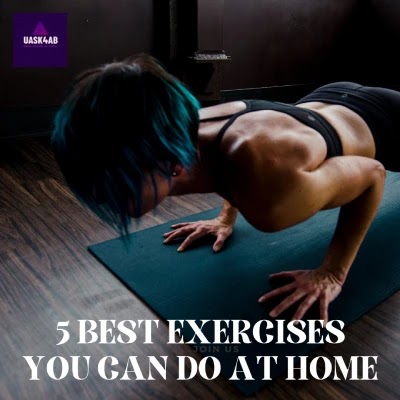
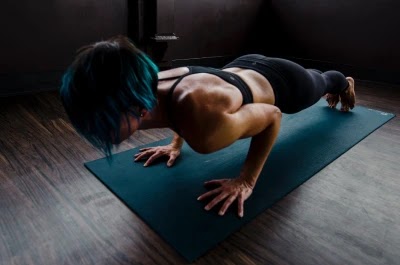
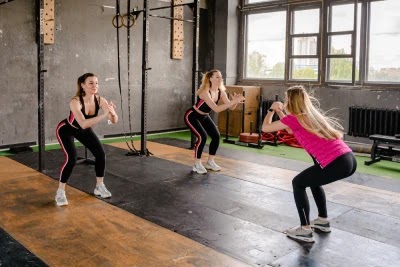
.webp)
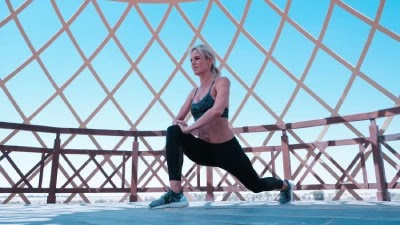










.webp)

.webp)
